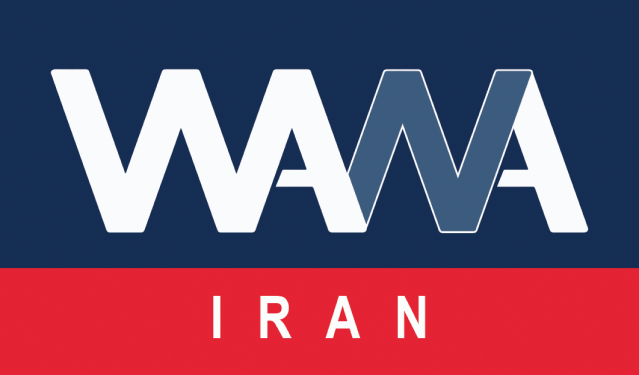Iran Pursues Space Industry Development and Lunar Exploration
WANA (Mar 26) – Satellites and their launches have a profound impact on various aspects of technology and national development. This technology plays a crucial role in fields such as communications and telecommunications, scientific and space research, the space industry, remote sensing, Earth monitoring, and even national security and defense.
Hassan Salarieh, head of the Iranian Space Organization, believes that the advancement of space technology enables countries to compete more effectively in scientific and technological arenas and take significant steps toward progress.
Iran’s Space Achievements in 2024
According to Hassan Salarieh, in 2024, a significant portion of Iran’s space programs proceeded as scheduled. However, the launches of the “Paya” and “Zafar” satellites were delayed. These launches are expected to take place in the first half of 2025. Additionally, there is a possibility of another launch occurring by the end of 2024 or early 2025.
Research and Development Plans for the Coming Year
Salarieh emphasizes that space programs are typically defined within long-term timeframes. By 2025, the Pars 3 and Nahid 3 satellites should complete their design phase and move on to the construction of modules and subsystems.
Additionally, the Rad 1 and Rad 2 satellite projects, with resolutions of 50 meters and 20 meters, respectively, are currently underway. These projects are progressing in collaboration with the private sector and are scheduled for launch within a specified timeline.
According to Salarieh, the Shahid Soleimani satellite constellation has also made significant progress, with its first launches planned for the coming year. Moreover, the Salmas and Chenaran ground stations are set to become operational as scheduled next year.
Progress in space Lunar Exploration and Biotechnologies
The head of the Iranian Space Agency highlighted the country’s activities related to lunar and celestial body exploration, noting that these fields have garnered the attention of advanced nations due to their resource potential and potential role in humanity’s future. Iran’s space agency has also taken steps in this direction, participating in international research and development projects.
Additionally, plans are underway for the development of bio-capsules and lunar rovers. Salarieh states that these programs have been planned with a horizon set for 2031, but technological advancements could either accelerate progress or present new challenges.
Development of Launch Vehicles and Access to Higher Orbits
One of the key objectives of Iran’s space program is to reach higher orbits, which requires the development of advanced launch vehicles and new satellite platforms.
Hassan Salarieh has announced that projects are underway to upgrade the “Simorgh” launch vehicle and develop solid-fuel launchers with more powerful engines.
Additionally, the “Nahid 2 and 3” telecommunications platforms are currently in the design and construction phase. To maintain orbital slots and facilitate the transfer of telecommunications satellites to higher orbits, orbital transfer blocks are also under development.
Growth of the Private Sector in Iran’s Space Industry
One of the significant events of the past year was the launch of two entirely private satellites, highlighting the growing role of the private sector in Iran’s space industry. Hassan Salarieh noted that Iranian private companies are developing and manufacturing satellites such as “Kowsar” and “Hodhod.”
Other projects, including the “research satellites 1, 2, and 4” satellites and the “Shahid Soleimani” satellite constellation, are also being carried out in collaboration with the private sector. He predicts that the number of private-sector space launches will increase next year, contributing to the expansion of the country’s space ecosystem.
Satellites to Be Designed and Built in 2025
Salarieh explains that in 2025, the design and construction of the Rad 1 and 2, Pars 3, and Nahid 3 satellites will be completed. Additionally, the initial prototype of Rad 1 is expected to be built. These satellites mark a significant step in enhancing Iran’s space capabilities.
Practical Applications of Satellites in Iran
The head of the Iranian Space Agency stated that, beyond technological advancements, satellites have extensive practical applications. Remote sensing satellites such as Pars 1, 2, and 3 and Kowsar are used for Earth imaging, playing a crucial role in fields like mapping, natural resource identification, crisis management, and water resource monitoring.
On the other hand, telecommunications satellites contribute to communication services, internet coverage, and connectivity in remote areas. He emphasized that satellite data, due to its high capability to provide visual information, has no substitute and plays a vital role in the country’s development.
Latest Status of the Khayyam Satellite
According to Hassan Salarieh, the “Khayyam” satellite, which is designed for remote sensing, is currently capturing images of various regions in Iran.
Some of these images are taken upon the request of government and private sector applicants, while others are collected to provide nationwide coverage.
He stated that this satellite plays a significant role in areas such as agriculture, natural resources, and environmental management and will contribute to the development of remote sensing expertise in Iran.












